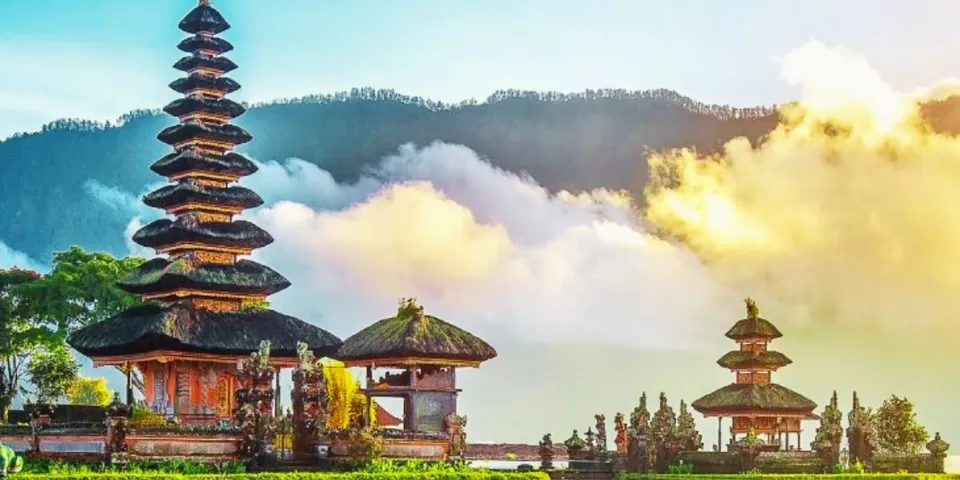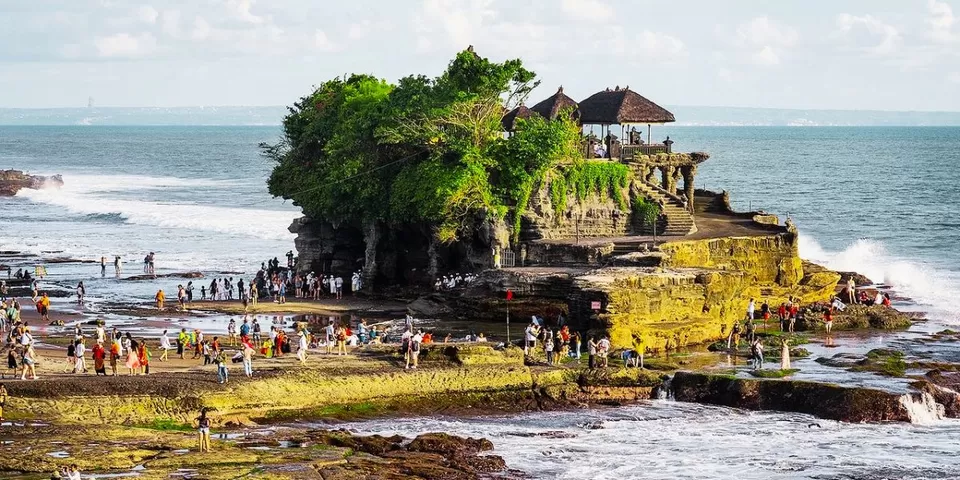Bali, known as the "Island of the Gods," is renowned for its stunning landscapes, vibrant culture, and rich history. Beyond its beaches and nightlife, Bali offers a treasure trove of historical sites and districts that provide a deep dive into the island's past and its cultural heritage. Here are some must-visit historic sites and districts that will transport you back in time.

1. Ubud Palace (Puri Saren Agung)
Located in the heart of Ubud, the Ubud Palace, or Puri Saren Agung, is a prime example of Balinese architecture and traditional culture. The palace was the official residence of the royal family of Ubud and remains a central landmark in the town. Constructed in the 1800s, the palace complex features intricate carvings, ornate gates, and lush gardens.
Visitors can explore the palace grounds, which are open to the public during the day. In the evenings, the palace courtyard transforms into a cultural hub, hosting traditional Balinese dance performances. These performances are a fantastic way to experience Balinese arts and culture firsthand.
2. Tirta Empul Temple
Tirta Empul Temple, located in the village of Tampaksiring, is one of Bali’s most significant water temples. Built around a natural spring, the temple is over 1,000 years old and is dedicated to Vishnu, the Hindu god of water. The sacred spring feeds various purification baths, pools, and fish ponds within the temple complex.
Balinese Hindus believe that the waters of Tirta Empul possess healing properties and purify the soul. Visitors can participate in the ritual bathing process, which involves entering the pools and cleansing themselves under a series of water spouts. The experience offers a unique glimpse into the spiritual practices of the Balinese people.
3. Goa Gajah (Elephant Cave)
Goa Gajah, also known as the Elephant Cave, is an archaeological site located near Ubud. Dating back to the 11th century, the cave served as a sanctuary for meditation and spiritual practices. The entrance of the cave is adorned with intricate carvings of demonic creatures, designed to ward off evil spirits.
Inside the cave, visitors will find a small worship area with stone statues and a central lingam, a representation of the Hindu god Shiva. The surrounding complex includes a bathing pool, ancient stone relics, and a serene garden, making it a peaceful place to explore and reflect.
4. Besakih Temple
Known as the “Mother Temple” of Bali, Besakih Temple is the largest and holiest temple complex on the island. Perched on the slopes of Mount Agung, Bali’s highest volcano, the temple complex consists of 23 separate temples. The main temple, Pura Penataran Agung, is a towering structure that dominates the site.
Besakih has been a center of Hindu worship for over a thousand years. The temple complex is a marvel of Balinese architecture, with tiered pagodas, ornate stone carvings, and sweeping views of the surrounding countryside. Visitors are encouraged to wear traditional Balinese attire when visiting the temple to show respect for its sacred nature.

5. Taman Ayun Temple
Taman Ayun Temple, located in the Mengwi district, is a royal temple complex surrounded by a large moat. Built in the 17th century by the Mengwi Kingdom, the temple is an architectural masterpiece, featuring multiple courtyards, intricately designed shrines, and beautiful gardens.
The temple’s name, Taman Ayun, means “beautiful garden,” and the lush, landscaped grounds live up to this name. Visitors can stroll through the tranquil gardens, cross stone bridges, and admire the temple’s distinctive multi-tiered shrines, known as merus. Taman Ayun is also a UNESCO World Heritage Site, recognized for its cultural and historical significance.
6. Klungkung Palace (Puri Agung Semarapura)
Klungkung Palace, or Puri Agung Semarapura, is located in the town of Semarapura and was once the seat of the powerful Klungkung Kingdom. Although much of the palace was destroyed during the Dutch colonial conquest in the early 20th century, the remaining structures and restored areas provide a fascinating insight into Bali’s royal past.
One of the highlights of the palace is the Kerta Gosa Pavilion, an open-sided hall adorned with intricately painted ceilings depicting scenes from Balinese mythology and traditional law. The Bale Kambang, a floating pavilion surrounded by a lotus pond, is another striking feature of the palace complex.
7. Penglipuran Village
For a glimpse into traditional Balinese village life, a visit to Penglipuran Village is a must. Located in the Bangli Regency, this well-preserved village is known for its traditional Balinese architecture and pristine environment. The village’s layout follows ancient Balinese principles, with a central road flanked by traditional houses and lush gardens.
Penglipuran Village is also committed to sustainable tourism and environmental conservation. Visitors can explore the village, interact with locals, and learn about traditional crafts and daily life in a Balinese community. The village’s serene atmosphere and cultural authenticity make it a unique destination.

8. Uluwatu Temple
Perched on a cliff overlooking the Indian Ocean, Uluwatu Temple is one of Bali’s most dramatic and revered sea temples. The temple is dedicated to the spirits of the sea and is believed to protect the island from evil sea spirits. Uluwatu’s location offers breathtaking views of the ocean and is a popular spot for watching the sunset.
In the evenings, the temple hosts Kecak dance performances, a traditional Balinese dance that tells the story of the Ramayana through intricate movements and chanting. The combination of the stunning setting and the cultural performance makes a visit to Uluwatu Temple a memorable experience.
Conclusion
Bali’s historic sites and districts offer a captivating journey through the island’s rich cultural heritage. From ancient temples and royal palaces to traditional villages and dramatic sea temples, these destinations provide a unique insight into Bali’s past and its enduring traditions. Whether you are a history enthusiast, a culture lover, or simply looking to experience the spiritual side of Bali, these historic sites are sure to leave a lasting impression.
